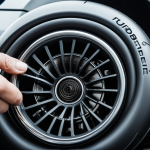Immediate Essentials for Checking and Replenishing Differential Fluid in UK Vehicles
Mastering the differential fluid check UK process is pivotal for reliable vehicle performance and longevity. Start by ensuring the vehicle is parked on a flat, stable surface and, for safety, engage the handbrake. You’ll need basic tools: a wrench or socket to remove the differential fill plug, clean rags, gloves, and appropriate differential fluid for a differential fluid refill UK.
Begin by locating the differential housing; refer to your vehicle manual for specifics—manufacturer recommendations are crucial in guiding fluid type and check intervals. Remove the fill plug carefully. If no fluid oozes out, the level is likely low, and replenishing is necessary. Top up fluid gradually until it reaches the bottom edge of the fill hole, avoiding overfilling, which can cause leaks.
Have you seen this : Comprehensive Handbook for Assessing and Guaranteeing Steering System Safety in UK Automobiles
Safety equipment, especially gloves and eye protection, is essential to prevent contact with fluid, which may be harmful. Disposal of old or excess fluid must adhere to UK vehicle maintenance environmental regulations to avoid legal issues.
Regular differential fluid check UK and timely differential fluid refill UK help maintain optimal lubrication and prevent costly damage. Always consult official manufacturer guidance to select the right fluid and follow accurate refill procedures specific to your UK vehicle.
Also read : Unlocking the Secrets of Classic Car Carburetors: An Essential Guide for UK Enthusiasts
Immediate Essentials for Checking and Replenishing Differential Fluid in UK Vehicles
Before starting a differential fluid check UK, gather essential tools: a wrench or socket set to remove the fill plug, clean rags, gloves, and the correct differential fluid for your vehicle. Safety equipment is paramount—wear gloves to prevent skin contact with fluid, which can be irritating or harmful.
Park your vehicle on level ground and engage the handbrake to ensure stability during the differential fluid refill UK process. Locate the differential housing, usually found at the axle’s centre, and carefully remove the fill plug. If fluid doesn’t seep out naturally, it signals the fluid level is low and needs topping up.
Gradually add fluid until it reaches the bottom edge of the fill hole. Overfilling can cause leaks and damage, so precision is critical. When selecting the fluid, adhere strictly to manufacturer recommendations found in your vehicle manual, as suitable fluid types vary depending on model and operating conditions.
Incorporating these steps enhances both the efficiency of your UK vehicle maintenance routine and the longevity of your differential system. For reliability and compliance with safety standards, always source fluids from reputable suppliers and dispose of old fluid according to UK environmental regulations.
Immediate Essentials for Checking and Replenishing Differential Fluid in UK Vehicles
When performing a differential fluid check UK, precision and safety are paramount. You need a sturdy wrench or socket set to remove the fill plug without stripping it. Always wear gloves to protect your skin from contact with the fluid, which can be an irritant. Clean rags are essential for wiping away any dirt or old fluid residue around the fill hole—this prevents contamination during the differential fluid refill UK process.
Safety begins with parking your vehicle on level ground and firmly applying the handbrake. Locate the differential housing at the axle centre; this is where you’ll perform the fluid check. A crucial tip is to avoid overfilling: fill only until the fluid reaches the bottom edge of the fill hole, ensuring optimal lubrication without leaks.
Consult your vehicle manual for precise manufacturer recommendations—fluid type and refill intervals can vary significantly among UK models. Using incorrect fluid may cause damage or reduce efficiency, undermining your UK vehicle maintenance efforts.
Sourcing fluids from reputable suppliers guarantees quality and compatibility. By diligently following these core steps and safety practices, you ensure the differential operates smoothly, extending your vehicle’s lifespan and reliability.
Immediate Essentials for Checking and Replenishing Differential Fluid in UK Vehicles
When performing a differential fluid check UK, having the right tools and safety gear is crucial. Essential items include a sturdy wrench or socket set to remove the fill plug securely, clean rags to wipe dirt or spills, and gloves to protect your hands from potentially irritating fluid. Safety glasses add an extra layer of protection against splashes during the differential fluid refill UK procedure.
Start by parking your vehicle on level ground and engaging the handbrake firmly—this prevents any unintended movement enhancing safety. Locate the differential housing, typically near the axle’s centre, then carefully remove the fill plug. If no fluid trickles out, the level is below the required mark, signaling the need for a differential fluid refill UK. Add fluid slowly until it just reaches the base of the fill hole; overfilling risks leaks and mechanical problems.
Always consult your vehicle manual for detailed manufacturer recommendations regarding fluid type and refill intervals. Adhering to these guidelines is key for effective UK vehicle maintenance. For assured quality and compatibility, obtain fluids from reputable suppliers or dealerships who stock manufacturer-approved products. This approach helps maintain differential integrity and prolong vehicle lifespan reliably.
Immediate Essentials for Checking and Replenishing Differential Fluid in UK Vehicles
Performing a differential fluid check UK effectively requires specific tools and attention to manufacturer guidance to ensure your UK vehicle maintenance is thorough and reliable. Essential tools include a durable wrench or socket set for removing the fill plug, clean rags to maintain a dirt-free workspace, and protective gloves to prevent skin irritation from fluid contact. Safety glasses further protect against accidental splashes during the differential fluid refill UK process.
Start by parking on level ground and applying the handbrake firmly to stabilise the vehicle. Locate the differential housing, typically on the axle centre, then carefully remove the fill plug. If no fluid appears at the edge of the fill hole, the level is low, signalling the need for a differential fluid refill UK. Fluid should be added gradually until it just reaches the bottom edge of the fill hole—overfilling risks leaks and mechanical damage.
Consult your vehicle manual closely; manufacturer recommendations provide precise guidance on the required fluid type, refill intervals, and safety measures. Sourcing fluids from reputable suppliers ensures product quality compatible with your vehicle’s specifications. Following these core steps optimises your UK vehicle maintenance routine, extending differential performance and vehicle longevity.
Immediate Essentials for Checking and Replenishing Differential Fluid in UK Vehicles
Understanding the core steps for a differential fluid check UK ensures your vehicle remains well-lubricated and reliable. Begin with essential tools: a durable wrench or socket set to safely remove the fill plug without damage, clean rags to prevent contamination, and protective gloves to avoid skin contact with potentially irritating fluid. Safety glasses are also advisable to shield against splashes during the differential fluid refill UK process.
After securing your vehicle on level ground with the handbrake engaged, locate the differential housing. Carefully remove the fill plug. If fluid does not naturally emerge, the fluid level is below optimal, and a refill is necessary. Add fluid slowly, stopping once it reaches the bottom edge of the fill hole to avoid overfilling, which can cause leaks.
Adhering to manufacturer recommendations is crucial. Check your vehicle manual for precise guidance on the correct fluid type and refill intervals to meet your UK vehicle maintenance standards. Incorrect fluid use may impair differential performance or cause damage. Obtain fluids from reputable suppliers or dealerships that stock manufacturer-approved products, guaranteeing quality and specification compliance. This approach upholds your vehicle’s health and regulatory conformity.







